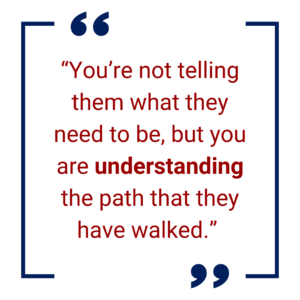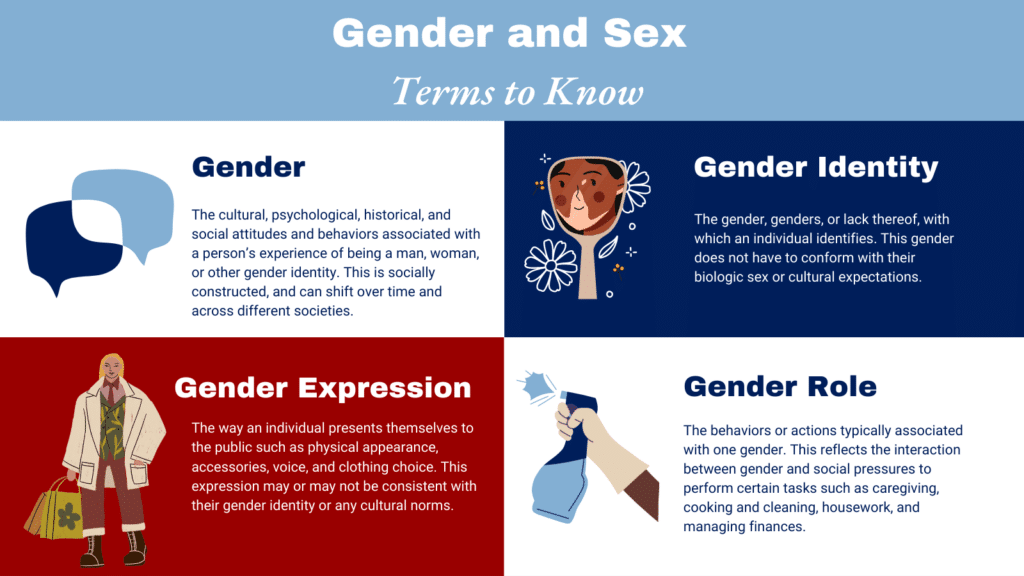By Meghan McCarthy
Life is a cycle of ever evolving roles. These roles can be that of a child, student, teacher, spouse, parent, or friend. Regardless, norms, expectations, and stereotypes help to define them. For patients with Alzheimer’s disease or related dementias (ADRDs), their diagnosis marks a shift in roles where individuals become patients and their spouses become caregivers.

Due to cognitive and functional impairments associated with dementia, a person may have more difficulty completing a task that they used to do with ease. A key aspect to this involves shifts in gender roles between spouses and loved ones.
Women, for example, who have raised children may struggle with needing to be cared for by others. Men who have made careers as builders and electricians may have difficulty asking for help with home maintenance.
These are examples of how gender roles, and stereotypes or expectations associated with them, can compound problems associated with AD dementia. But, they can also be used positively to better understand the experience of a loved one, patient, or caregiver.
To fully support a loved one or patient after diagnosis, acknowledging a change in gender roles is key.
It starts with a conversation.
Dr. Shana Stites, PsyD, MA, MS, is a clinical psychologist with the Penn Program on Precision Medicine for the Brain (P3MB) and an assistant professor in the Department of Psychiatry at the University of Pennsylvania. Dr. Stites has devoted much of her research to the intersection of sex and gender within ADRD.
Stereotypes are oversimplifications about how groups of people act, appear, or think. A gender stereotype is a view about characteristics or roles that are thought to be appropriate for individuals based on being a man or woman. An example is the belief that girls should play with dolls and boys play with trucks.
Although stereotypes can be used in ways that are harmful, Dr. Stites says they can also be powerful tools to prompt discussion that helps build empathetic understanding of other individuals.
“Stereotypes provide an avenue of roads to follow in talking with another person. A stereotype might offer a point of view to start a conversation or a guess about something a person has experienced. As you take different perspectives around a stereotype, you are opening up avenues to understand a person’s experience,” said Dr. Stites.
When talking about lived experiences, discussions can be framed in many ways. It is ok to start the conversation by describing a common experience, then ask what the individual’s experience has been relative to it.
For example: “I know it can be difficult for some men when they can no longer make home repairs, is this true for you?” Discussion can also be approached with an open-ended question.
Understanding shifts in gender roles allows spouses to better understand one another.
“If you wife has always cooked to show love for you, it can feel hurtful if she no longer cooks dinner. For her, she may feel like she is inadequate and failing,” Dr. Stites said.
Every individual navigates expectations and social norms differently. Some may struggle when they can no longer carryout activities associated with a certain gender role. Others may be comfortable with this, but then face judgement from others.
An individual’s role or experience may be completely outside of a given stereotype. Men, for example, may have been the cook of the family, and may find it hard to give up that role. Women who have raised children may struggle to be caregivers to their spouse.
“Throughout the conversation, conveying an open-mind, positive regard, and judgement-free validation is crucial,” Dr Stites said.
Gender role expectations and challenges can vary generationally. For example, while women were once expected to be housewives, women now slightly outnumber men in the U.S. workforce. When talking to a loved one or patient about gender roles, keep these differences in mind.
“There is a subtle but important shift in public stereotypes, stigma and bias, and the pressures to conform to certain expectations,” Dr. Stites said. “You’re not telling them what they need to be, but you are understanding the path that they have walked.”
No matter how a conversation is approached, give space for self-identification and self-explanation. Talking about gender roles is often an overlooked aspect of the experience of living with Alzheimer’s. When supporting loved ones, patients, and caregivers, know that it is an ongoing conversation.


